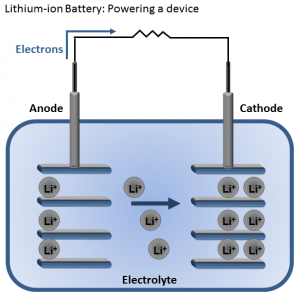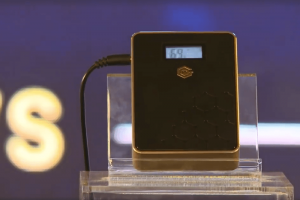There’s been a lot of fuss recently regarding the new phones. The Samsung Note 7 and the iPhone 7, particularly, seem to exhibit a major flaw: They tend to explode. Well, exploding may be overstating the actual situation, as most of the time they just catch on fire, but it is still quite a major inconvenience.
So why is this happening? Its not like lithium-ion batteries are a new technology, right?
Well, it is true that companies have been using these batteries for a long time now, but the problem has to do with how companies have began to stretch out the limits of the design in order to satisfy its customers.
The lithium-ion batteries work like this:
Where the solution inside the battery helps move the electric charge in and out of the battery.
This these batteries, there are certain limits such as size and charge that dictate the safety and stability of the battery. Therefore, when the companies begin to push the limits of the battery design so that they can give a longer charge, and use less space. What this creates is a very unstable battery, and a very unhappy customer.
So what can we do to fix this?
Meet the Graphene battery.
Graphene is a material that has many wonderful properties. It’s lightweight, conducts electricity extremely well, and is incredibly stable, forming a sturdy yet flexible material. The best part is: it is found in everyday items such as pencils and charcoal, so it won’t be a limited resource either.
Graphene batteries work by using layers of graphene to act as the plates that move electricity in and out of the battery. By using graphene instead of lithium or other metal plates, we fix two major problems:
- Graphene holds a much larger amount of charge, and is able to charge up in just a fraction of the time. Pictured below is the G-King graphene battery. At the size of a regular smartphone, it holds more than 3 times the charge of a regular phone battery. Best of all, it can be fully charged in fifteen minutes.
- Since graphene is so safe and flexible, it opens up new venues of battery design. Graphene batteries are made in all sorts of shapes and sizes, enabling batteries in all sorts of convenient places.
Although most graphene products are still under development, expect to see some great results coming through the next couple of years. I, for one, will be sure to pick these up as soon as they hit the general market. In the meantime, you can watch this video about the unveiling of the G-King battery.

-Dennis Lin, Undergrad Chemistry




One response to “Graphene Batteries: A Better Alternative”